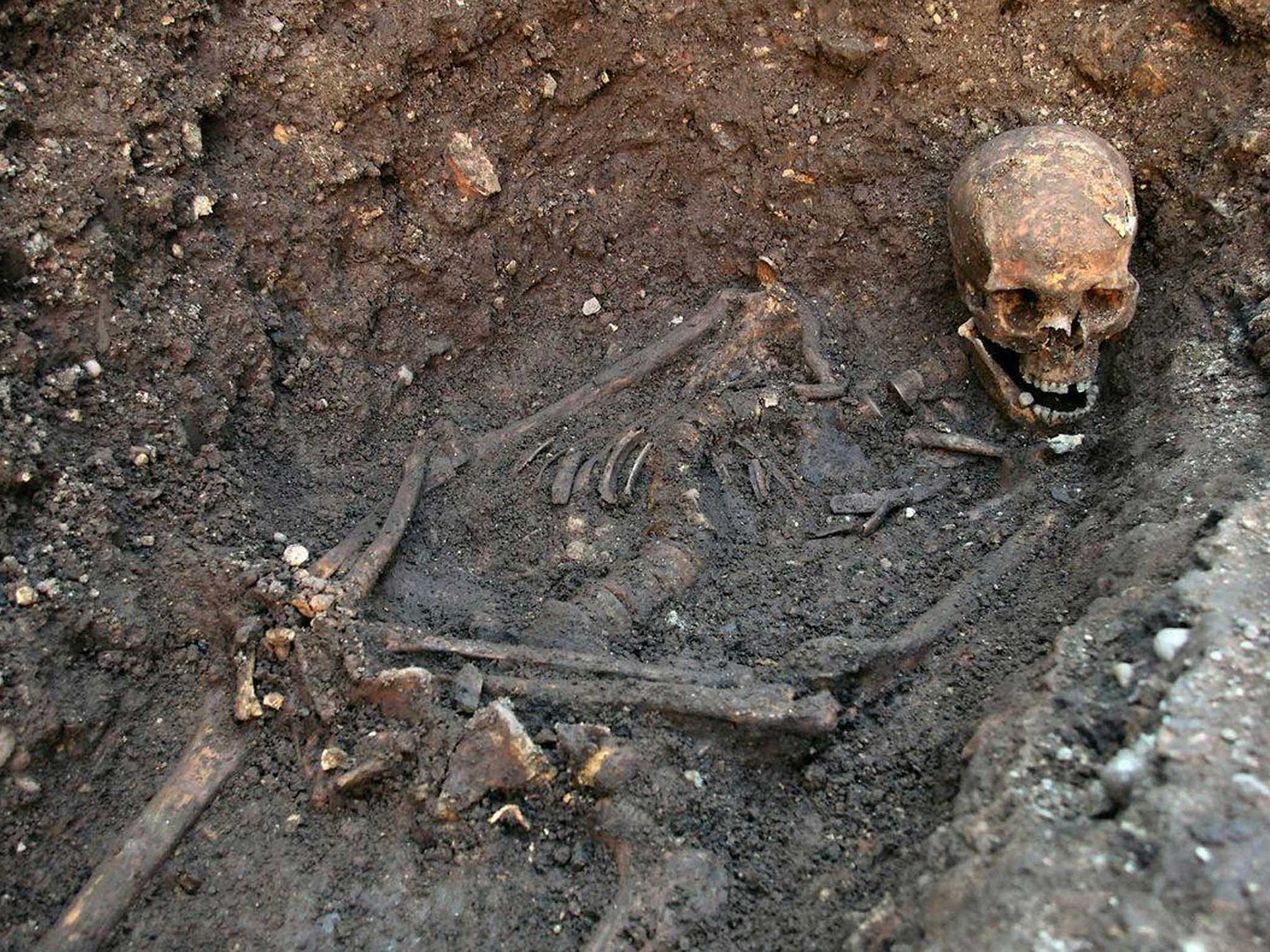Richard III expert: The skeleton in the car park may not be missing monarch after all

Such was the certainty with which a twisted skeleton found in a Leicester car park was identified last year as the remains of Richard III that a High Court battle is being fought over the right to decide where to bury the fallen monarch.
But confirmation “beyond reasonable doubt” that the hunchbacked king demonised by Shakespeare was found has been challenged by two leading academics, who claim there can be no confidence that the bones belong to Richard. They suggest an inquest-type hearing should now be held to examine the evidence.
The announcement last year that the remains of the monarch accused of ordering the murder of his nephews - the Princes in the Tower - had been found was billed as one of the biggest historical discoveries for decades and made headlines across the globe.
But Michael Hicks, an expert on Richard III and professor of history at Winchester University, has come forward to say he is not convinced that the remains identified by a team from the University of Leicester are those of the Yorkist monarch. He says they could belong to one of many victims of the Wars of the Roses which ravaged 15th century England.
Professor Hicks said that evidence from DNA testing and radiocarbon dating, which featured prominently in the claims that Richard had been found, could not be relied upon to prove the case and the remains could belong to one of dozens of descendants of the king’s female forebears.
Richard’s maternal grandmother, Jean Beaufort, had 16 children and many of her descendants would have been involved in the fighting between between the houses of York and Lancaster, and perished on the battlefield.
Experts at the Leicester found a match in mitochondrial or maternal-line DNA, which supposedly passes unchanged between generations, between two female descendants of Richard’s sister, Anne, and the skeleton found in a grave on the site of the medieval Greyfriars Church in Leicester.
Prof Hicks told The Independent: “If mitochrondrial DNA doesn’t change over time, descendants in the female line from Richard’s maternal grandmother, great-grandmother, great-grandmother, great-great-grandmother can share the same characteristics.
“There is potentially a considerable pool of people who could meet the scientific criteria without being Richard III. We are going way beyond the available evidence if we say this is definitely Richard III. It could be – but it is not proven and we should not confuse possibilities or probabilities with certainties.”
The academic, whose concerns are highlighted in the BBC History Magazine, said many who had fought and been killed during the Wars of the Roses, including the 1485 Battle of Bosworth at which Richard was killed, would have suffered injuries similar to those inflicted on the Leicester skeleton. He added there was also no proof from his lifetime that the king had suffered from the the scoliosis or curvature of the spine found on the remains.
Martin Biddle, a leading archaeologist and former fellow of medieval archaeology at Oxford University, also cast doubt on the identification, saying the records on the original 2012 excavation had yet to be published and further work was needed on the Greyfriars site to establish how many burials took place.
Prof Biddle told the magazine: “Without further excavation there is… no certainty about the burial that it has been claimed was that of Richard III.
“Before all this goes any further, it would be wise to be certain the body really is his. Something akin to a coroner’s court should be set up to consider all the evidence.”
The identification of the royal skeleton has provoked strong emotions from many quarters, including a group of descendants of Richard calling itself the Plantagenet Alliance which has launched High Court proceedings challenging the decision to bury the remains in Leicester Cathedral and calling for a consultation on their final resting place.
Leicester University said its identification was based on at least six separate lines of evidence, including a contemporary reports of the location of Richard’s grave and the nature of the skeleton.
In a statement, the university said: “The strength of the identification is that different kinds of evidence all point to the same result. Professor Hicks is entitled to his views but we would challenge and counter them.”
Join our commenting forum
Join thought-provoking conversations, follow other Independent readers and see their replies
Comments